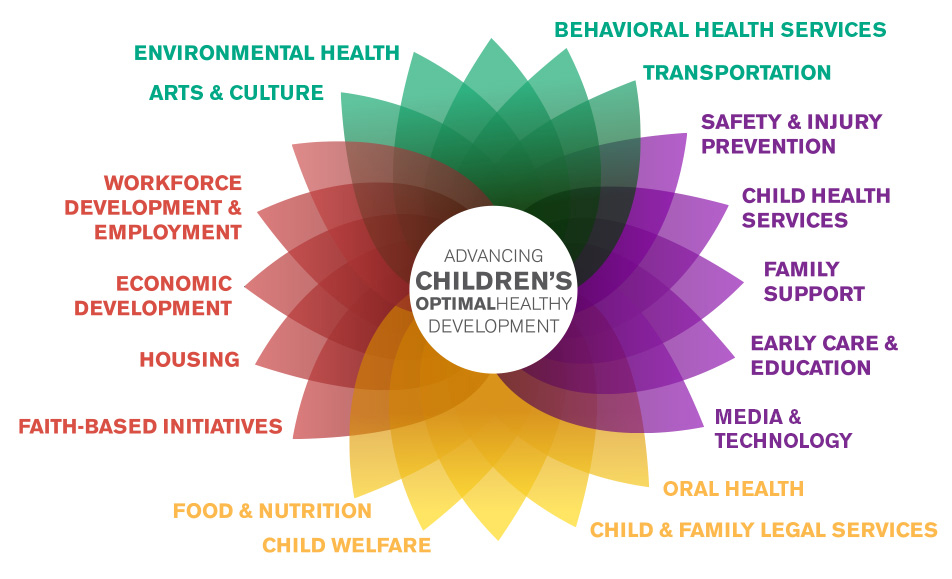This is the first blog in a three blog series regarding North Hartford Ascend’s Inaugural Strengthening Families Protective Factors Framework Community of Practice.
In September of 2024, Childhood Prosperity Lab (the Lab) led the inaugural North Hartford Ascend Strengthening Families Protective Factors Community of Practice with 15 service providers and leaders. The Strengthening Families Protective Factors Framework (SFPFF) is a research-informed and strength-based framework that helps professionals and families identify and build protective factors. Protective factors, broadly, are the environmental conditions or personal attributes that contribute to whether or not a caregiver, child, or family experiences positive or negative outcomes. The Center for the Study of Social Policy, the creators of the SFPFF, identified five protective factors that promote child development and reduce the likelihood of child abuse and neglect: parental resilience, social connections, concrete support in times of need, knowledge of parenting and child development, and social and emotional competence of children.
The North Hartford Ascend Community of Practice consisted of seven two-hour learning sessions over five consecutive weeks and three monthly collaboration sessions. Learning Sessions are thematic, curriculum-based workshops that provide a foundational understanding of the SFPFF and each protective factor while Collaboration Sessions are application-based workshops that support participant practice change, integration of the SFPFF into everyday work through small but significant changes, and peer-to-peer learning and connection. In between each Collaboration Session, participants use a Plan, Do, Study, Act (PDSA) cycle template created by the Lab to document one small yet significant change they want to make to strengthen their practice as it relates to the framework.
15 service providers and leaders representing 11 organizations affiliated with Ascend participated in the inaugural Community of Practice. Participants represented a range of sectors known to influence the optimal healthy development of children and families, as depicted in the Office for Community Child Health (OCCH) Flower Diagram, including child health services, family support via care coordination, early care and education, and safety and injury prevention - to name a few.
Overall, participants found the Community of Practice to be a valuable and engaging experience that enhanced their practice. In feedback surveys administered after each of the Learning Sessions:
- 100% of respondents strongly agreed or agreed they were satisfied with the quality of the sessions.
- 100% of respondents strongly agreed or agreed they understand the importance and role of using strength-based approaches in North Hartford Ascend.
- 100% of respondents strongly agreed or agreed they understand the importance of culture in strengthening families' protective factors.
- 92.8% of respondents strongly agreed or agreed they can make small yet significant changes to strengthen families’ protective factors in their role.
Collaboration Sessions proved to be just as valuable with:
- 87.5% of respondents agreeing or strongly agreeing the sessions helped them feel more confident about applying the Strengthening Families Protective Factors Framework to their work; and
- 100% of respondents agreeing or strongly agreeing they learned something helpful from another participant or the facilitators of the session.
- More specifically, participants attribute the PDSA’s and “being able to share and get feedback from one another” as the most useful component of the session.
Equally exciting, there is evidence that the value and impact of the Community of Practice reached well beyond those who directly participated. A majority of participants indicated and provided concrete examples of how they brought back what they learned during the Community of Practice to their respective programs and organizations via small but significant changes each week For example, one leader encouraged their staff to prioritize one protective factor each week, share how they were prioritizing it, and report back how they elevated the protective factor in their practice during weekly team meetings while another leader whose program provided assessment, referral, and linkage to services invited community-based programs and services to present at team meetings so their staff could have a more in-depth understanding of the program and build relationships with other service providers.
These are two examples of small but significant changes Community of Practice participants made to integrate strength-based approaches into their work and strengthen families’ protective factors. The next two/three blogs in this series will spotlight one Community of Practice participant each and describe how the Strengthening Families Protective Factors Framework enhanced their individual and programmatic efforts to strengthen protective factors.

